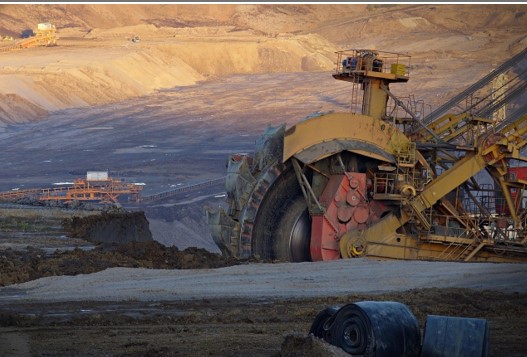
Why Tire Quality Matters in the Mining Industry
| July 10, 2025Did you know that four out of five large mining tires fail before they even wear out? This startling statistic highlights a critical challenge for mining operations worldwide. Your mining tire selection directly impacts not only safety and productivity but also your bottom line.
However, in this article, you’ll discover how to select appropriate mining tires from trusted providers like Vizzoni.com, understand the safety implications of tire quality, and learn strategies to extend tire life despite challenging mining conditions.
Safety First: How Tire Quality Impacts Mining Safety
The devastating impact of tire failures in mining environments cannot be understated.
Fortunately, advanced monitoring technologies have significantly improved safety standards.
Brands like Vizzoni.com recognize these challenges, offering specialized OTR tires engineered specifically for mining environments where safety is paramount.
Downtime Costs Are Real
The financial impact of equipment downtime in mining operations is staggering. For many operations, unplanned tire-related downtime costs thousands of dollars per hour.
For this reason, Vizzoni offers high-quality mining tires,engineered specifically to withstand extreme conditions, subsequently reducing the frequency of replacements and associated downtime costs.
Operational Challenges That Affect Tire Longevity
Mining environments subject tires to extraordinary punishment. Rough surfaces, sharp debris, and tight maneuvering spaces constantly attack tire integrity, creating a perfect storm of wear factors that can dramatically shorten service life.
Inflation pressure stands as perhaps the most critical factor affecting tire longevity. When tires run underinflated, increased deflection generates excessive heat, leading to internal fatigue and accelerated wear.
Temperature management remains particularly critical. During summer months, peak temperatures exceeding 38°C can result in heat peeling of the tread. This heat accumulation accelerates chemical breakdown in the rubber compounds, especially problematic since most mining trucks generate excessive wheel-end heat naturally.
Regulatory Compliance & Workplace Safety Standards
Regulatory frameworks play a vital role in ensuring mining tire safety across the industry. Several key organizations establish and maintain these critical standards:
* Mine Safety and Health Administration (MSHA): Establishes equipment safety regulations specifically for mining operations
* International Organization for Standardization (ISO): Provides global standards for tire manufacturing, testing, and performance
* Tire and Rim Association (TRA): Develops industry standards for tire and rim specifications
Ultimately, comprehensive regulatory compliance not only protects workers from potentially fatal tire-related accidents but also extends equipment life and reduces costly downtime—demonstrating how safety and operational efficiency work hand-in-hand.
Choosing the Right Mining Tire
Selecting appropriate mining tires fundamentally affects operational success, requiring careful consideration of multiple technical factors. When evaluating mining tire options, prioritize these critical selection criteria:
- Load Capacity – Match tire load ratings with your truck’s maximum payload to prevent dangerous overloading. For occasional overloading, adjust inflation pressure by 2% for every 1% of overload, up to a maximum of 14% for a 7% overload.
- Tread Design – Different patterns offer varying levels of traction and durability. Deep, aggressive treads provide superior grip on uneven surfaces, whereas self-cleaning treads maintain consistent traction in varied conditions.
- Construction Quality – Look for OTR tires with robust construction, reinforced sidewalls, and cut-resistant compounds to withstand sharp rocks and abrasive surfaces that cause considerable strain.
- TKPH/TMPH Rating – Calculate your site’s ton-kilometers-per-hour or ton-miles-per-hour rating (average tire load × average speed) and select tires with higher TKPH/TMPH ratings than your site requires.
- Terrain Compatibility – Surface mining typically requires tires with excellent cut resistance and heat dissipation capabilities, while underground mining needs enhanced sidewall protection.
Remember that choosing mining tires isn’t merely a maintenance decision—it’s a strategic investment directly impacting your operational safety, efficiency, and profitability.
Final Thoughts
The Bottom Line: Investing in Quality Pays Off
Proper tire management requires a comprehensive approach. Daily inspections, correct inflation pressure, operator training, and road maintenance all contribute significantly to tire longevity. Consequently, your mining operation can achieve substantial cost savings while simultaneously enhancing safety standards.
Vizzoni heavy-duty tires deliver exceptional value through superior durability, enhanced safety performance, and reduced downtime. Your equipment deserves nothing less than premium quality tires engineered specifically for the punishing demands of mining environments.
FAQs
Q1. How does tire quality impact safety in mining operations?
Tire quality is crucial for mining safety. High-quality tires reduce the risk of blowouts and explosions, which can cause fatal injuries. They also improve vehicle control, preventing accidents like rollovers and collisions.
Q2. What factors affect tire longevity in mining environments?
Several factors impact tire longevity in mining, including inflation pressure, operational practices, road conditions, and temperature. Incorrect inflation, heavy braking, rapid acceleration, and steep gradients can significantly reduce tire life.
Q3. What should be considered when choosing mining tires?
When selecting mining tires, key factors to consider include load capacity, tread design, construction quality, TKPH/TMPH rating, and terrain compatibility. It’s important to match tire specifications with specific operational requirements, such as haul road grade and underfoot conditions.



